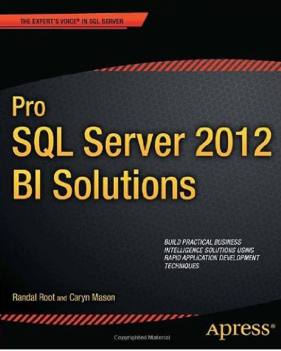| Pro SQL Server 2012 BI Solutions |
|
Author: Randall Root and Caryn Mason You can put forward a strong argument that Business Intelligence is the only real point of having a database. Why keep data unless you're going to use it to make your business more effective, or in some other way to use the data to provide insights that can't be seen by 'just looking' at the records? The problem in the past has been that BI products are large, cumbersome, expensive, and hard to use. Whether or not you like SQL Server as a database, there's no denying that Microsoft has, over recent versions, put together some BI tools that don't cost a fortune, and that in theory are simple enough for anyone to use. Root and Mason's book assumes no prior knowledge of BI or the BI elements of SQL Server. It isn't aimed at programmers in particular, just at database techies who need to understand BI.
Once the data warehouse is created, the next stage of a BI project in SQL Server is to use SSAS to analyze the data.SQL Server Analysis Services lets you create data cubes made up of aggregate data that you can run reports on. Root and Mason have good in-depth descriptions of the concepts of setting up data cubes, and how to design and configure the dimensions. There's also a chapter on additional cube and dimension configurations that looks at the 'extras' - the other tabs you get when crating cubes and dimensions where you can specify actions, partitions, aggregations, perspectives and translations. There are just two chapters on creating reports, one showing how to use SQL queries, the other MDX queries. I'd have liked more coverage of this area, but I can see how the space requirements make that difficult. There's a chapter looking at creating reports in Excel, and two chapters look at creating and configuring reports with SSRS - SQL Server Reporting Services. Overall, I liked this book. It gives a good balanced view of what BI is all about, and how to go from a mass of data to a system that you can run queries and reports against. If you don't really understand SQL Server's BI facilities, it's a good read, and it contains enough detail and descriptions to enable you to create a fully featured BI system.
|
|||
| Last Updated ( Thursday, 17 January 2013 ) |

